Why don't Americans love hedge like Brits?
I coudn't decide where to post this: trees or shrubs and put it on shrubs. Ken answered and suggested I post here too.
I totally admit that I am enamoured with Brit hedging. Google the word "hedge" and scads of websites of hedging specialists pop up in the .UK. They have traditional formal hedge, tapestry, bird/bee attractive hedges, edible, nod to Brit historics, stock hedging. .. Then just try to find something similar in America where you can buy bundles of bareroot hedging mixes or that has anywhere near the extensive hedge specific inventories the UK companies have... Maybe bundled privet, if that???
I was quite excited to find even one company that offered a plethora of stock for reasonable prices only to discover a terrible rating from customers. Bleah.
Ken said that people don't want to deal with the yearly shaping and trimming or have room to put hedge on McMansion lots. But, what makes the Brits so different that they don't mind the upkeep? And it's not a huge country--people are shoehorned in together but they love their hedge!
Who is a trustworthy US company that sell retail/wholesale s tree/shrub liners or bareroot and has a large inventory in the US? Yes, I could search out individual large pots of certain shrubs or trees but would pay much more this way than to go the liner or bareroot route. I can find a few quart pots here, but it can add up in a long hedge... Yes, Musser Forests has some good choices. But it seems like a whole lot more companies are only offering small stock wholesale.
Comments (72)
Huggorm
10 years ago"Trimming them is work. Americans are lazy."
It is actually a whole lot of work if you want a neet hedge. And it has to be started correctly or it will never be really handsome.poaky1
10 years agoCompanula, If I tried the posts and string method I would likely get invasives, and horrible weeds. Great if you aren't surrounded by weeds. I would likely get Red Maple trees, if I get anything native to my area. I don't care for them, also wild Cherry trees, wild Staghorn sumac trees too.
Related Professionals
Milwaukee Landscape Architects & Landscape Designers · Brentwood Landscape Contractors · Cupertino Landscape Contractors · East Lake-Orient Park Landscape Contractors · Leicester Landscape Contractors · Rockville Landscape Contractors · Streamwood Landscape Contractors · Cedar Park Siding & Exteriors · Delaware County Siding & Exteriors · Orange County Siding & Exteriors · Carlisle Decks, Patios & Outdoor Enclosures · Garden City Decks, Patios & Outdoor Enclosures · Grandview Decks, Patios & Outdoor Enclosures · King of Prussia Decks, Patios & Outdoor Enclosures · Paradise Valley Decks, Patios & Outdoor Enclosurespoaky1
10 years agoCampanula, Flora or anyone familiar with the Dover UK area. There is an expanse of rock wall with the north sea not too far back from it, leaving Dover. Does that rock wall have any significance or it is just one of the many rock walls all over the UK? Probably a dumb question, but I remember seeing a large expanse of stone wall as we left Dover. I have photos but regular film photos, so can't post.
floral_uk z.8/9 SW UK
10 years agoThey face the Channel, not the North Sea. By rock wall do you mean something built? Or just the natural chalk cliffs? There is a castle on top of the cliffs. Is that what you mean? Or there are the usual sea defences. Not sure what you are referring to.
whaas_5a
10 years agoThis is like asking why Brits don't love straight teeth.
Folks already hit on the cultural reasons why they are more popular over in the UK.
davidrt28 (zone 7)
10 years ago"Trimming them is work. Americans are lazy."
There is some truth to that, but this thread was also talking about hedgerows, which don't have to be trimmed. They just aren't seen as necessary here in many cases. You can be in the midwest and drive for miles past an unbroken expanse of corn. (maize) That's never the appearance of UK farmland, at least as I've seen in person or on TV. All the farm fields in programs like Midsomer Murders, for example, seem to be of several hectares separated by hedgerows. We still have a bit of that in the northeast, but it's not the norm for American farmland. The Central Valley of California also had some very bare, empty expanses as I remember.
And in fact the more correct thing to say more recently would just be "Americans don't like plants". In my neighborhood I see people buy older houses and go on removal sprees, pulling out perfectly good mature plants.
poaky1
8 years agoFloral, I am sorry I never read your answer. I don't mean the chalk cliffs. Those are very famous, I knew what they were. I mean a rock wall between the sea and the road. It is likely there to prevent someone from going off the road and into the ocean. BTW, my Taxus Baccatta croaked on me. I want to try a new one, but, I will need to keep it sheltered until it gets some size to it. I will check online, but, any one know of a mail order source in the US or will ship to the US? I also am thinking that there are more pro gardeners in the UK to do the trimming the land owners don't have time or care to do. That may be more for the rich though, than your average Joe/ Jane homeowner? Later
User
8 years agolast modified: 8 years agoWe have breakwaters - either wooden groynes (yes, that is a word|), stone walls or concrete and metal pilings, to prevent wave erosion and land being moved by tidal vigour. Very handy for a spot of fishing. We also have promenades which double as flood defences.
Re hedging.Culturally, there are some obvious differences in how we utilise space related to privacy, actual acreage, town planning. A historian of the urban landscape would immediately point out the 'ideal' vision of one long, unimpeded expanse of lawn - Sujwan, upthread, mentioned Olmstead...and I have to agree how far our landscape architecture has diverged. Always worth emphasising a few statistics here - while the US has around 40x as much area than the UK, there are only 5x the amount of people living there (300milion :64million)...so for every UK square metre of space, the US has 8x as much, per capita.We are.effectively, somewhat squeezed. Moreover, hedging is never apolitical - we have unhappy folk memories of enclosures and invasions - hedges represent a paradox - both safety and exile. The growing of a hedge is tangible and practical but also deeply symbolic and, given our denuded tree cover, hedgerows have been habitats, boundaries and a salvation for wildlife...and have a deep resonance for the British people.
Having just planted several dozen yews and a long strip of blossoming and berrying hedge (viburnum, spindle, crab apple, prunus spinosa, wild privet, sorbus...festooned with briar rose, honeysuckle, hops and clematis vitalba), I could probably ramble on at (tedious) length. Suffice to say - we are fortunate enough to be able to buy bundles of bare-root whips for mere pennies - alder, for example - 29p each (approx 20cents).
Dave in NoVA • N. Virginia • zone 7A
8 years agolast modified: 8 years agoThat is a simple question that would require a complex answer. There are cultural, practical and climactic reasons why hedgerows are more popular.
I should think it has to do with average property sizes (would you want to maintain an acre property with hedges all around?), lack of available habitat for creatures ( we still have lots of forest around, even in the DC area). adequate rainfall (are you willing to supplementally irrigate yards of hedge to keep it alive?), types of plants used (why would you want a deciduous hedge?), maintenance (are you willing to pay to have it maintained? -- otherwise who has the time?), time and materials (fences are faster -- instant gratification). Etc. etc.
That said, I love a good hedge. Just takes a LOT of time to develop them -- decades in some cases. And it HAS to be evergreen, otherwise what's the point? But deer love many of our quicker growing plants, so they can look really bad. Or severe cold weather, snow loads can do a number on them. On and on.
edlincoln
8 years agolast modified: 8 years agoSeveral of the more popular British hedging plants are really bad ideas in much of the US. Privet is an invasive species and boxwood is threatened by disease and not cold hardy everywhere. Unfortunately...people still try to plant them, sometimes with disastrous results that leave a lot of people turned against the very idea of hedges.
And of course in colder climates you have fewer evergreen options. Yews works], but people aren't patient enough for them.Poorly maintained formal hedges look hideous. Lots of people buy property with ugly, poorly maintained hedges...and the first thing they do is rip it out.
sujiwan_gw 6b MD/PA
Original Author8 years agoFormal hedges seem to be mono plantings of things like hollies, yew, and flat needled evergreens. Formal lends itself to certain architectural or historical styles. Diseased or dying plants in the mono-planting stand out. Other formal hedges were clipped deciduous plants like privet and spirea. The mixed/tapestry hedge is more friendly to pollinators and birds plus you can get year round attraction. Yes, it's informal and either you keep it to the back, less public areas of your property or you learn how to keep it looking good by judicious pruning. I envy the "pennies for whips"--my best sources are $3-5 per plant here.
mad_gallica (z5 Eastern NY)
8 years agoSoil & Water sells conservation whips for about $1 apiece. So cheap sources are out there.
viper114
8 years agoIts because Americans are lazy now if they grew into a wall without trimming then they would be all over
bengz6westmd
8 years agoAmericans aren't lazy -- look at the amount of effort put into lawn-mowing. But that's exactly why, they want perfectly-lined & cropped lawns, but don't care or have time for anything else on the lot. Of course, this is a generality, almost all posting here have interests in plants other than stupid grass. And the obsession w/lawns is more prevalent now on recent developments than earlier generations -- older neighborhoods can look beautiful.
Huggorm
8 years agolast modified: 8 years agoSeveral of the more popular British hedging plants are really bad ideas
in much of the US. Privet is an invasive species and boxwood is
threatened by disease and not cold hardy everywhere.
Unfortunately...people still try to plant them, sometimes with
disastrous results that leave a lot of people turned against the very
idea of hedges.I don't know about british hedges but many of the more popular hedging plants in sweden are actually american. Like aronia melanocarpa, crataegus flabellata, amelanchier lamarckii and of course thuja 'smaragd' that might be the most common of them all. But there are probably 20-30 plant species that are commonly used for hedges so there's a lot of variation.
viper114
8 years agolast modified: 8 years agomajority of Americans will tell you they dont have time or dont feel like maintaining a hedge.....also although alot of time is spent on lawns majority use riding mowers nowadays or pay for service....most probably wouldnt even have a lawn if they only had a push mower.They will also cut down trees just because they dont want to clean up leaves in fall.
User
8 years agoNo, not really evergreen apart from a small percentage. To make our hedges dense and stockproof (their ultimate end use), we thicken the hedges by 'laying' - slashing the woody trunk with a bill-hook and literally laying the almost severed trunk over at an acute angle to the ground. New growth (sap) grows like crazy and we weave the tops in with willow plaits - a beautiful sight, summer and winter. Traditionally, we are looking for stockproof blackthorn (P.spinosa) and quick (hawthorn)...but there are regional variations and laying styles. Hedges in an urban situation are more about personal privacy and also tend to a more formal style...and we have also been keen to experiment with pleaching and other training methods. I spent a whole term on 'hedges' at hort.school...but in small gardens, fencing now dominates.
kentrees12
8 years agoI'd always wondered what laying a hedge was, and then on an episode of 'Gardeners World' there was a segment on the subject. WOW. I can only imagine the amount of work involved with cutting and staking miles of working hedge.
User
8 years agolast modified: 8 years agoAh yes, Americans as a whole can be baffling but I don't like to see entire nations categorised as 'lazy'....but I also know you are not being totally serious, Vipes.
Laying a hedge is hard work...and long too. A good hedger can easily manage a chain (22yards) a day at a cost of around £12 ($16-18) per yard...but that includes the top weaving (hazel blinders) and staking (Midland style). Basic laying can be learned fairly quickly (Lancashire style, timber stakes, no blinders - I can do it) and only requires a billhook and a strong back. We are seeing a revival of this country skill with hedge-laying (and ploughing) competitions all summer (although the actual work is usually done in winter). Mostly, it was done for foxhunting as well as stockproofing but we are seeing it done now for the pure beauty of a great laid hedge. There are around 30regional variations ranging from the tidy Midland style to laying on top of a raised dyke (Devon) or the narrow Yorkshire style. Another (ahem) skill is hand scything - after our brushcutter was stolen, |I had to depend on my Austrian scythe for a summer and I truly do not recommend it as an alternative (blisters!)
sujiwan
8 years agoI love this info, Campanula! Can you recommend any textbooks on hedge from your hort college days? I wonder if any of this ever was utilized in the US by Brit settlers. The closest thing to plant use I read about was stock being kept in by uprooted trees from clearing the land or by close planting of trees like spiny Osage Orange in other areas where hardy. Informal hedge not used for stock purposes, maybe edible or for wildlife purposes would contain what sort of things? (I'm always interested in what will also grow here in US Eastern zone 6 as many nice hedge plants that grow in England are not hardy for me).
User
8 years agolast modified: 8 years agoYep - there is a National Hedge Laying Society which is also on Facebook - they have a range of really useful stuff, especially dealing with the many regional styles. Traditionally, a good hedge contains mostly hawthorn but also field maple, sycamore. dogwood, (although not popular as it can snap), alder, viburnum, spindle, blackthorn in varying proportions. I did a course back in the 80s (for fun).
. In more northerly, less wooded areas, drystone walling was practiced - this is much more a feature of my northern childhood scrambling around the Pennines and Yorkshire moors.
Oddly enough, I have been on something of a US native odyssey myself (started with penstemons and moved onto woodies). I have planted up hedging in parts of my woodland...hoping I last long enough to lay it (around 10 years).
floral_uk z.8/9 SW UK
8 years agoJust a word of clarification on hedge laying. Yes it is hard work but it only needs doing infrequently. A laid hedge can last 50 years before it needs relaying as long as it is maintained by trimming. Laying rejuvenates the plants and stops the hedge thinning at the base.
Laying is essentially an agricultural technique and not much used in gardens.
Hedges are by no means pointless if they are deciduous. They still provide a wind break, privacy, wildlife habitat and erosion and flood control. And they are beautiful when coming into leafing flower.
floral_uk z.8/9 SW UK
8 years agoWe're into definitions now. There are plenty of shrub borders like that in the UK. But they wouldn't be classed as hedges. They'd be borders, beds or even shrubberies, but not hedges.
wisconsitom
8 years agoI appreciate that clarification Floral-not for my own sake mind you, but that confusion of terms surfaces here often. May as well throw in the word screen too!
It appears to me that very often on this and "Shrubs" boards, when folks talk of hedges and screens, they usually mean shrub borders.
Hedges a la England are cool as hell. I don't see such techniques ever taking hold here however. It's just different. Most of those factors have already been touched upon.
Laura Ross
7 years agoI live near Williamsburg, Va and I would love to grow a hedge that would keep out the deer and hunting dogs next door. I would prefer not to put in an ugly, expensive metal fence. Does not have to be especially tidy -- we live in the country, not in a "development". Anyone have any ideas of tree/shrub varieties and techniques? Our soil is low-ish, moist (and wet in some spots) and acidic. Holly, oak, beech, some poplar and hickory on the less wet areas and pine and maples grow easily on even the wetter soil. Would willow work? Would the deer eat it up before it could grow? I wondered about holly -- seems nothing can kill it -- but even if possible, wouldn't it be difficult (painful) to maintain...??? Thanks! :)
User
7 years agolast modified: 7 years agoWould this qualify? East side of my yard from the bedroom window. Can be sheared to shape but I haven't done that since it was cut down to the ground and left to regrow about 5 years ago.
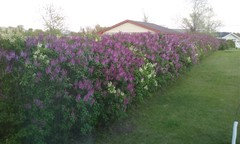
NHBabs z4b-5a NH
7 years agolast modified: 7 years agoLaura, this is a long thread. You may get more attention if you start a new thread. Scroll up to the top and click on the word Trees (GardenWeb topics / Gardenweb forums / Trees) at the top left. That will give you a box in which to post a new thread. You will also get email notifications to you so you know when someone has responded.
sam_md
7 years ago....keep out deer and hunting dogs next door. Here's what you are looking for, Hardy Orange or Poncirus trifoliata. It makes an impenetrable hedge.
Dave in NoVA • N. Virginia • zone 7A
7 years agolast modified: 7 years ago'...I live near Williamsburg, Va and I would love to grow a hedge that would keep out the deer and hunting dogs next door. I would prefer not to put in an ugly, expensive metal fence. Does not have to be especially tidy -- we live in the country, not in a "development". Anyone have any ideas of tree/shrub varieties and techniques? Our soil is low-ish, moist (and wet in some spots) and acidic....'
You should look into Wax Myrtle. But you may have to shear it to keep it more dense, as it can get quite large and open. I doubt it will keep deer out though, but they won't eat it. So that, or maybe Yaupon holly.
Embothrium
7 years agolast modified: 7 years agoAnimals will penetrate a planting indefinitely except perhaps for something like the hardy orange which eventually becomes like a wire fence. Deer in particular are specifically adapted to living on forest margins where they make trails through the shrubs. For definite animal control anytime soon you need a fence. Wire netting made and sold specifically for excluding deer is barely visible, apart from the poles it is stapled onto.
Logan L Johnson
7 years agoOh, you don't have to buy bundles of privet! Come to my property and pull up as much of the crap as you want.
poaky1
7 years agolast modified: 7 years agoIf Laura Ross had a real "british hedge" put in the dogs would stay out. Laura try the shrub forum and try posting your own new post or thread. This is about british hedges which are really different from American shrubs, it's an easy mistake to make. Being near Williamsburg, Va someone could likely help you with the hedge if you had an existing shrubbery, they reinact the british colony peoples way of living, and there are some fancy ways of espalier and fancy things, maybe someone could make a hedge, if you had something growing already. I know you likely really want a hedge, anyway, good luck Laura, I'm sure there are many options for you in your warmer zone, many are likely evergreen, lucky you.
poaky1
7 years agolast modified: 7 years agoSorry Laura Ross my last post wasn't very helpful but the "Osage Orange tree" may have been what Emboth meant in the above post, but, I don't know if they are growing where you are, if they are you can collect those green fruits that fall along the road in fall, we call them "Monkey balls" here, and the trees make very thorny living hedges, they are growing in many places near me in SW Pa. But, I can't help but think you can find something nicer and evergreen where you are, but maybe I should just let you make your choice, maybe the Osage Orange is right for you, especially if you can get the fruitballs and use them to get a free barrier. But, then again those thorns may injure someone. Emboth may have meant a whole different plant when he/she said "hardy orange". I just guessed that's what they meant. Any shrub growing thick enough should do it. Osage orange will grow from Texas to zone 6 and maybe 5 or lower, so it will adapt. But, again you have so many options Laura, as long as it's thickly filled in, well, I don't know just what kinda dogs your trying to hold back either. Until that shrub/tree grows in, you'll need something. A determined dog needs a fence, and some will outsmart that anyway, we've had a couple like that. But, anyway Laura, I hope you can find what you need.
Embothrium
7 years agoI was talking about Hardy Orange. See Sam's comment and photo a short distance up the page.
poaky1
7 years agoOkay, Poncirus Trifoliata, Sorry Emboth, it's easy to get confused, especially when you have been involved in more than one plant subject in a day, and I get confused sometimes, anyway. The Osage Orange has thorns also. But, I'm guessing that the Poncirus Trifoliata grows fast into an inpenatrable hedge much quicker than the osage orange trees. Well, anyway, good luck with all that sorry for the wrong ID on the plants etc.Later guys.
Deborah lippitt
4 years agoBarb wire..did hedges in. And think big picture..like the US. Huge expanses compared to British Isles. Though I am considering starting some hedgerows here in Oregon. Filberts are supposed to be good. I saw one show in England where they 1/2 sliced the filbert tree and laid down the sliced bit and there fore added to the hedge. We had a 340 ac place where we grew hay and we kept lots of wild places where we could. Wild roses comprised most of the living fences we did have. I'm just starting my investigation. I know my horses will eat just about anything though..have cleared massive amounts of blackberry patches.
floral_uk z.8/9 SW UK
4 years agoDeborah the technique you are referring to is 'hedge laying'. If you google that term you'll find lots of information.
Deborah lippitt
4 years agoFloral_uk..thanks. I think people in the US need to understand the different types of hedges. Being a rancher/framer I look more toward the utilitarian types..I found the use of the filbert interesting (it was a British show and I wish I could remember what it was) But no where have I found in my searches here mentioning of filberts. Also a lot of the hedges I see are just "pretty" and would be of no use in farming..especially getting established..my horses managed to eat along with the blackberries 3 Locust saplings which are supposed to be poison to them..I really liked that idea of the "laying"..I do have several spots here where I will start establishing hedges..but will use electric fencing to keep the livestock away until established!! And try to keep out the dreaded blackberries too! As this is the land of filberts(Hazelnut the new term) so easy to get plants!
NHBabs z4b-5a NH
4 years agolast modified: 4 years agoIME you will want to keep the livestock away, especially horses, even after the hedge has been established as well. I have seen many trees and shrubs within paddocks or along the edges stripped of bark and anything else the hoses can reach to eat, so hedging plants will also be eaten.
gardengal48 (PNW Z8/9)
4 years agoFilbert and hazelnut are interchangeable terms and both have been used for decades. And if residing in OR, make sure you are selecting blight resistant cultivars - Eastern Filbert Blight just about wiped out that industry a few years ago before more disease resistant cultivars were developed and marketed.
Maybe it's more of a regional thing but hedging and natural hedgerows have been part of my landscape design portfolio for years. Sheared single species hedges are much more common and popular with size restricted urban and suburban properties, with the varied species, untrimmed hedgerows suitable to larger, more rural properties. I am currently involved with a multiacre design project that will have about 600 feet of a mixed native species hedgerow, separating the cultivated part of the garden from the pasturelands beyond.
FWIW, our native western hazelnut, Coylus cornuta, will be one of the native species included in this hedgerow. The native hazels have been proven to be very disease resistant. Not the quality or flavor of the nuts you'll find in the store but the wildlife love them.
Deborah lippitt
4 years agoOh I am well aware of the blight situation..babs as it right though..horses stripping bark..maybe ought to consider rock walls instead!! We have plenty of rocks..or better yet a cob wall! Live on red clay! Can't see the point if the livestock are going to eat it!! If it isn't one thing it's another!! :)
I'm planting plenty of other natives and eradicating blackberries and Hawthorn too and let's not forget tansy..even got our neighbors going after theirs!! We live on the remains of an oak savannah and will be establishing more baby oaks too..I have developed a way to keep livestock from eating saplings now!
floral_uk z.8/9 SW UK
4 years agoHawthorn is a ubiquitous staple of country hedges in Britain. Is there a reason you want to get rid of It? It is stock proof and has greateild life value. And blackberries are also inevitable and welcome. As are wild roses andhoneysuckle. Hedges are regularly maintained so they don't get out of hand.
I don't know the programme you saw but filberts are not native here and I've never seen them in a farm hedge. Our native hazel is Corylus avellana. Filberts are a different, non native, species, Corylus maxima, which is only found in cultivation, or as an escapee.
I love your idea of hedges. They are fantastic for wildlife and soil conservation. But they do need maintenance. It's usually done by flail here nowadays rather than traditional hedge laying, which is labour intensive and slow.
Deborah lippitt
4 years agoThere are 2 native varieties. The English variety is considered invasive..I can testify..as the previous owners didn't control weeds and English type has made itself at home..which we are slowly taking care of. On the show maybe it was a native hazel..I only remember them calling it a hazelnut. My life revolves around hard labor!! hahaha going in for arthroscopic knee surgery today..too much time spent on knee in the dirt!!
floral_uk z.8/9 SW UK
4 years agoIf they talked about Hazel in relation to native hedges it was Corylus avellana. We only have one native species and it has been economically very important for millennia. It was the species used for hurdle making and for the wattle used in building. C maxima, the filbert, was introduced in the 18th century just for nut production.
Deborah lippitt
4 years agoInteresting good to know all this ..will be familiarizing myself with the the different varieties..
HU-456353534
8 months agoI also live in Virginia, and was thinking about the British hedge for privacy reasons.
I took a roadtrip in the UK several years ago, and my first notice of hedgerows was while driving a one-lane country road in my car rental. The roads were extremely narrow, with little room for mistakes. Initially, I feared accidentally scratching the paint while maintaining the center of the lane. Then, my fear turned into terror when the hedgerows intermittently vanished in favor of a stone walls. It scared the crap out of me. Needless to say, the hedgerows return was a welcome sight.
I know I am writing this well after the first post, but for anyone wanting a look at hedgerow building, you should check out Season 2, Episode 6 of Clarkson's Farm on Amazon Prime.
As for the "Americans are lazy" comment.. Americans rank relatively high as one of hardest working people in the world, especially against most developed countries. I do think Americans wouldn't take the time to maintain a hedge, but I believe it is more about 'how' they prioritize their time. Even I have berated my brother on the amount of time he spends on his yard. I have commented to him that he spends more time on maintaining it, rather than enjoying it.
HU-456353534
8 months agoI also live in Virginia, and was thinking about the British hedge for privacy reasons.
I took a roadtrip in the UK several years ago, and my first notice of hedgerows was while driving a one-lane country road in my car rental. The roads were extremely narrow, with little room for mistakes. Initially, I feared accidentally scratching the paint while maintaining the center of the lane. Then, my fear turned into terror when the hedgerows intermittently vanished in favor of a stone walls. It scared the crap out of me. Needless to say, the hedgerows return was a welcome sight.
I know I am writing this well after the first post, but for anyone wanting a look at hedgerow building, you should check out Season 2, Episode 6 of Clarkson's Farm on Amazon Prime.
As for the "Americans are lazy" comment.. Americans rank relatively high as one of hardest working people in the world, especially against most developed countries. I do think Americans wouldn't take the time to maintain a hedge, but I believe it is more about 'how' they prioritize their time. Even I have berated my brother on the amount of time he spends on his yard. I have commented to him that he spends more time on maintaining it, rather than enjoying it.




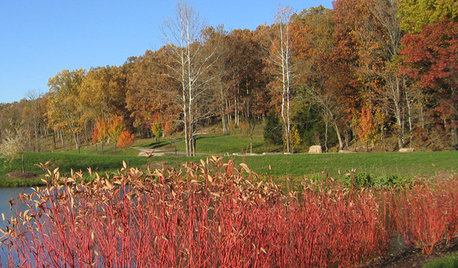

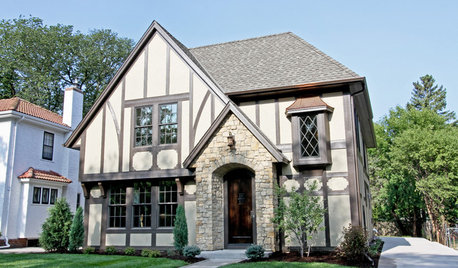

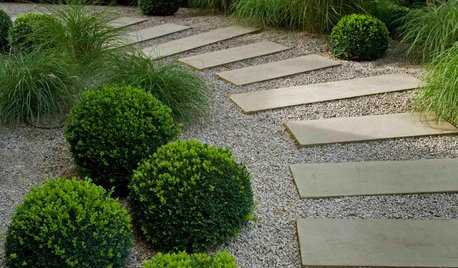
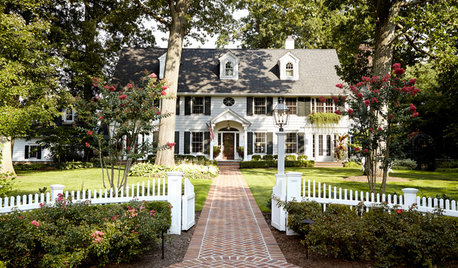






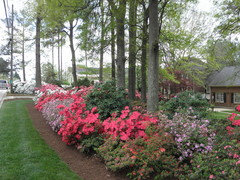



uptightbuyer